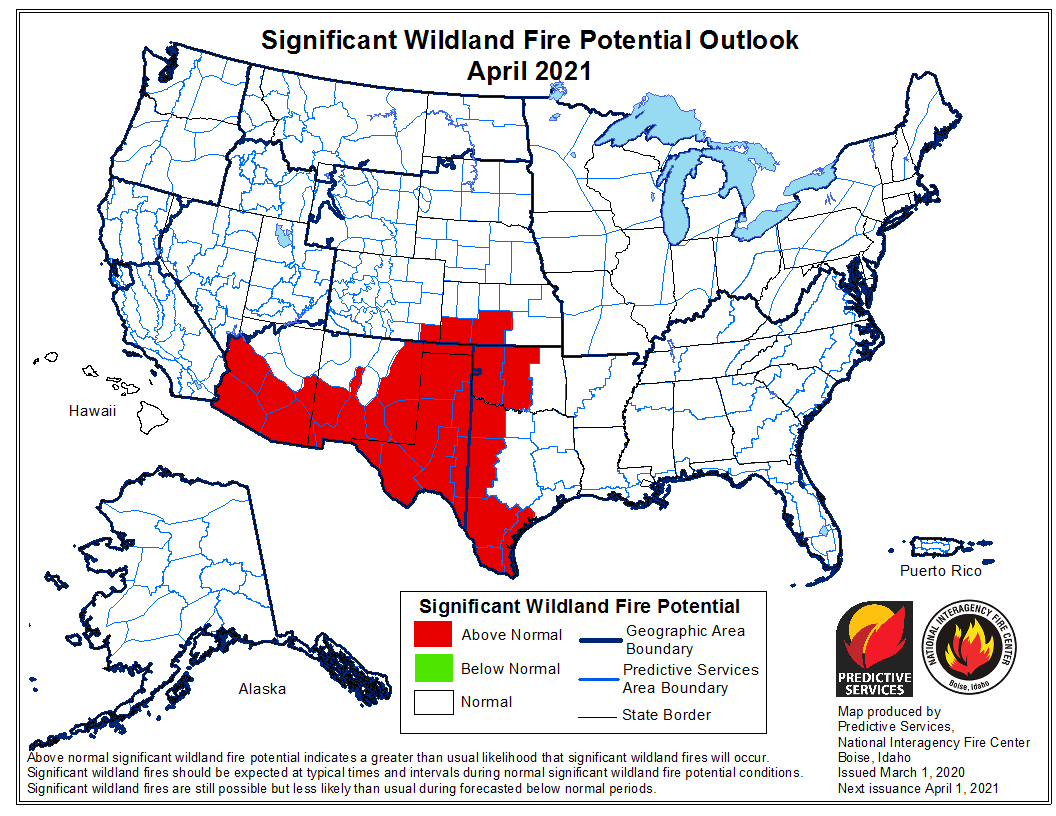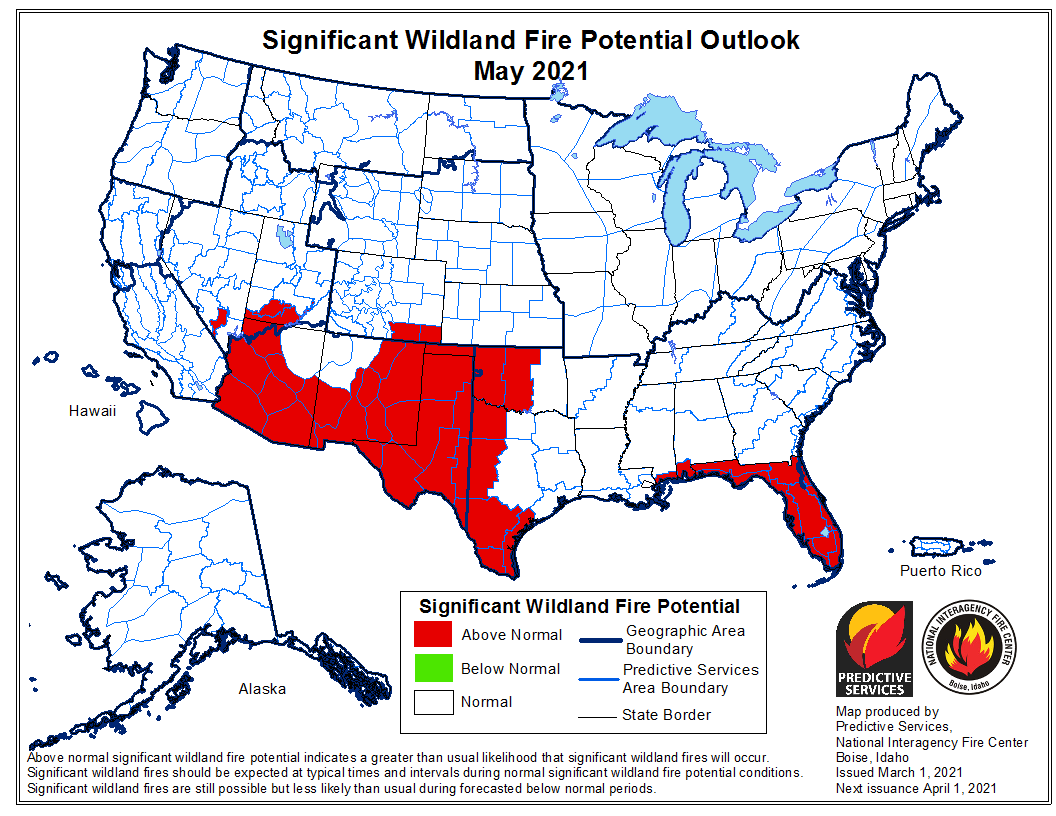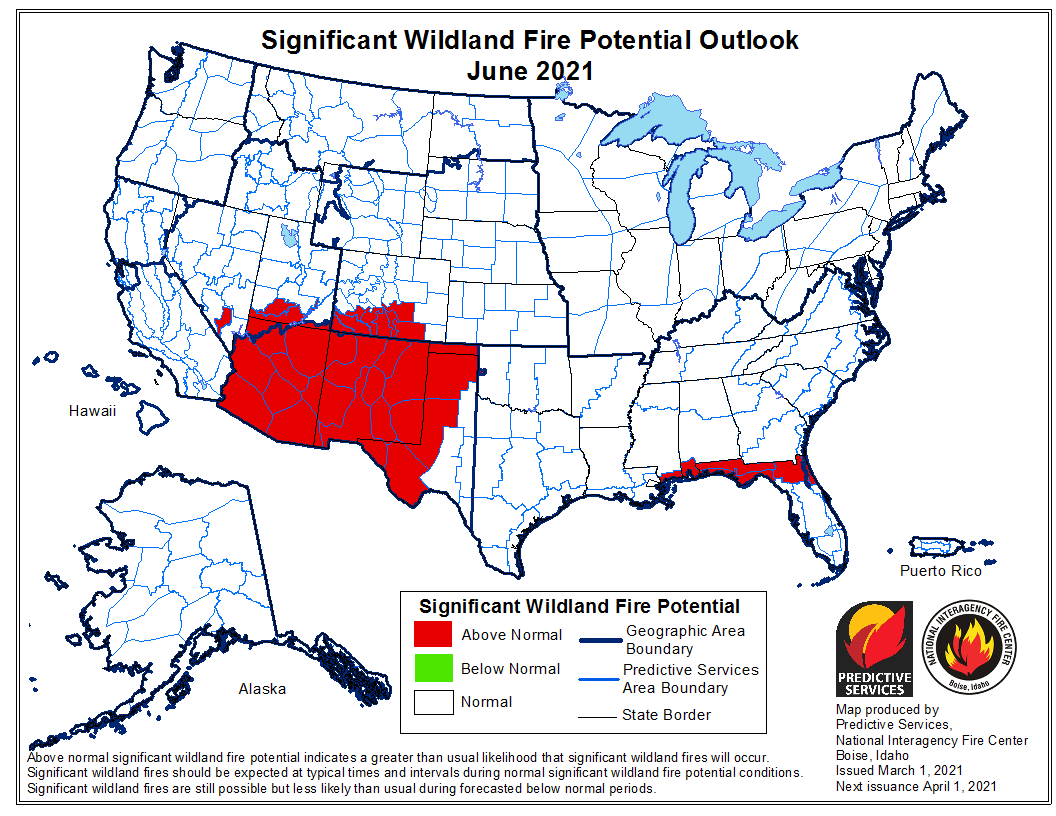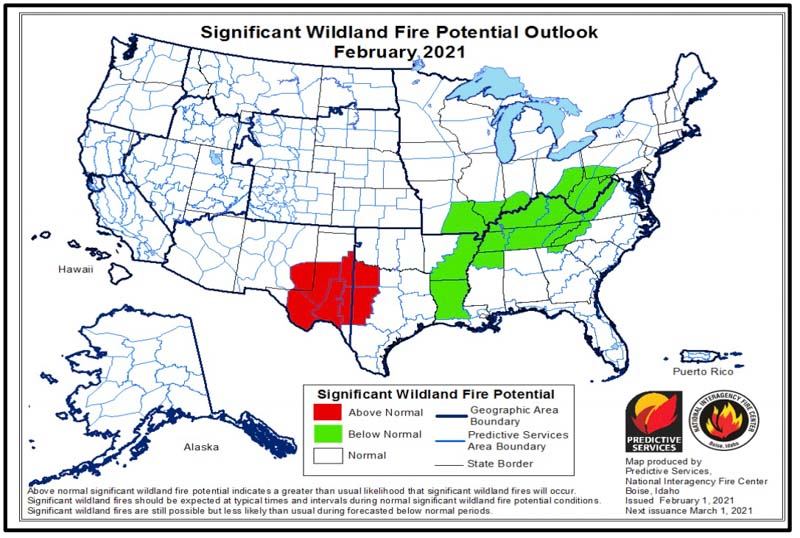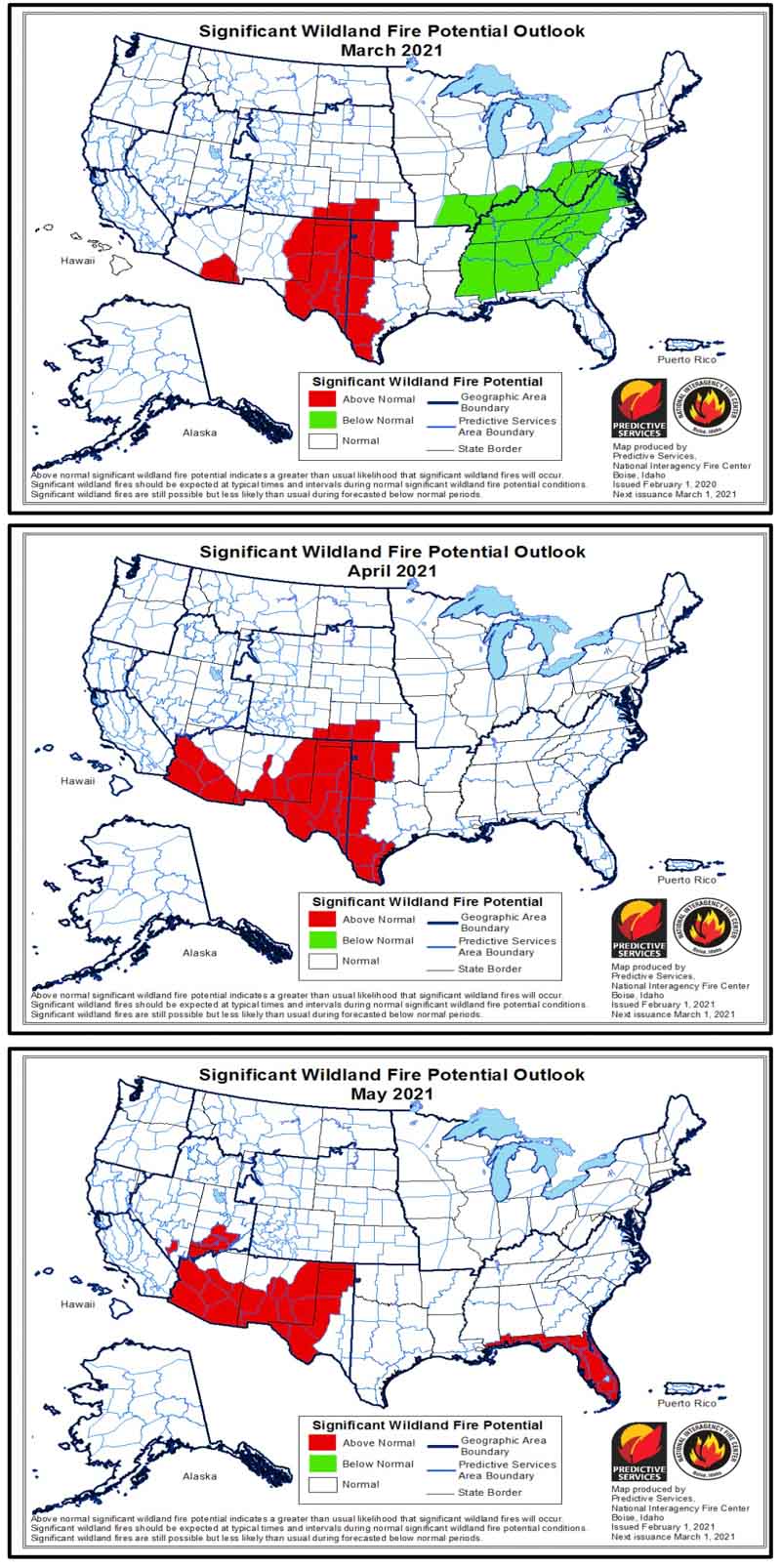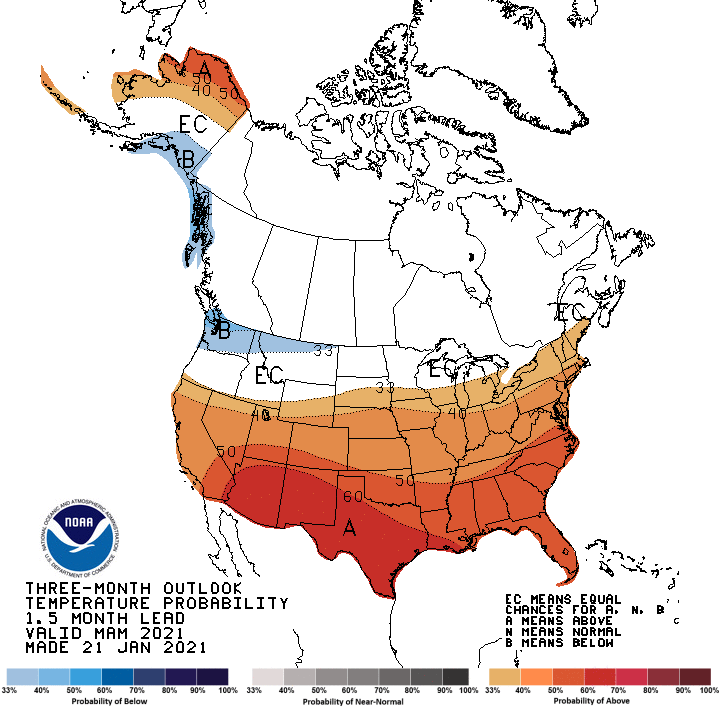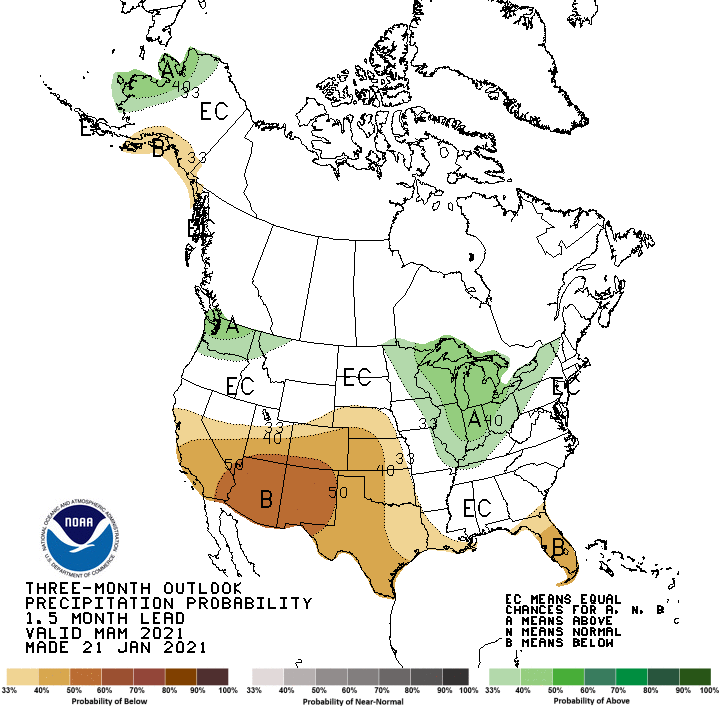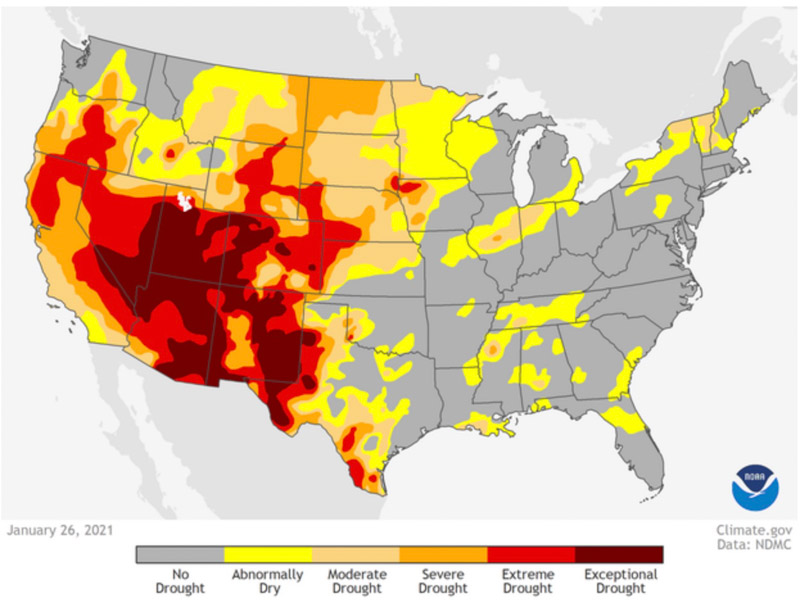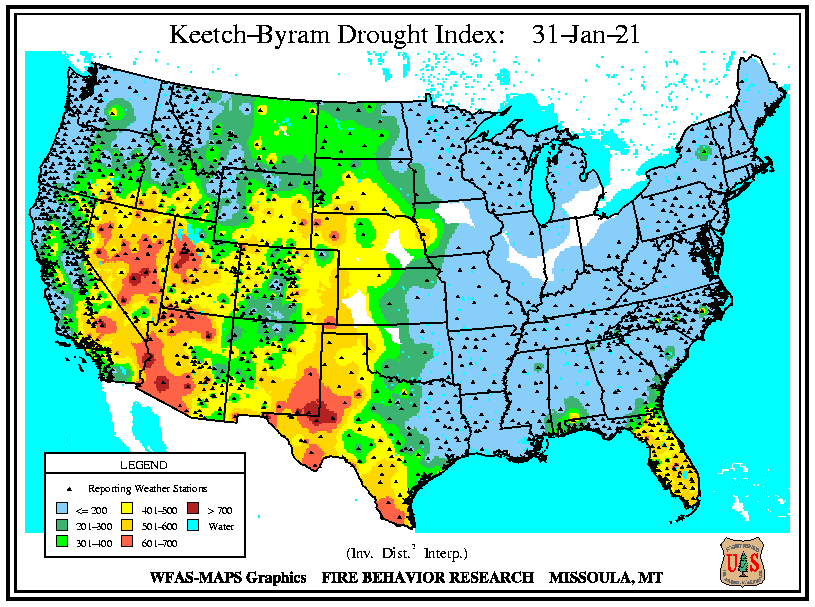The forecasts for wildland fire potential issued May 1 by the National Interagency Fire Center for May through August predict wildfire potential will be higher than normal in the Southwest until the monsoons arrive in July. Fire potential is also expected to be high in much of the Great Basin for the entire period and will be increasing in the mountains of California from June through August.
The Great Plains and Northern Rockies are slated for normal conditions but Central Oregon and Southeast Washington will be above normal beginning in June.
The data from NIFC shown here represents the cumulative forecasts of the ten Geographic Area Predictive Services Units and the National Predictive Services Unit.
Below:
- An excerpt from the NIFC narrative report for the next several months;
- More of NIFC’s monthly graphical outlooks;
- NOAA’s three-month temperature and precipitation forecasts;
- Drought Monitor;
- Keetch-Byram Drought Index.
“Climate outlooks indicate warmer and drier than normal conditions are likely for much of the Plains and West into summer continuing and exacerbating drought there. A Fuels and Fire Behavior Advisory is in effect for North Dakota, eastern Montana, and northwest South Dakota due to drought and continuous fine fuels. Near normal timing and precipitation are expected with the Southwest Monsoon in July, which will help alleviate drought and significant fire activity.
“Near normal significant fire potential is forecast across the northern Plains into the Great Lakes for May, but dry periods followed by strong winds could increase fire activity above normal. Outside of increased fire potential in western Oklahoma and west Texas, Southern area is likely to have near normal fire potential with elevated activity possible in and around northern Florida in May.
“The Southwest is forecast to have above normal significant fire potential through June before the Southwest Monsoon arrives. Above normal significant fire potential will expand northward into the Great Basin and Rocky Mountain Geographic Areas through August with areas closer to the monsoon likely returning to near normal significant fire potential in July and August. Central Oregon into southeast Washington are likely to have above normal significant fire potential beginning in June with portions of the Coast Ranges, Sierra, and Cascades in California increasing to above normal in June and July and continuing through August. Leeside locations of Hawaii are likely to have above normal significant fire potential in July and August due to heavier fuel loading and forecast warm and dry conditions, while Alaska should have near normal significant fire potential through summer.”





















